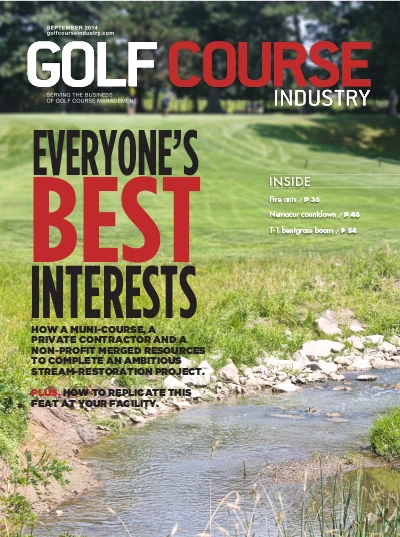 John Kaminski John Kaminski |
I’m sitting in a hotel room in Australia thinking about what I have learned during a two-week trip. I had the opportunity to speak to superintendent groups in Sydney and Cairns, as well as give a research summary to academics at the International Horticulture Congress in Brisbane. Every travel experience and interaction with turfgrass managers from around the world results in new ideas and a new appreciation of managing turf under different climates. For some, the challenges are weather-related. Others deal with a lack of educated labor or fundamental resources necessary to provide quality playing conditions. From my perspective, one thing all managers can do is step back and look at their agronomic programs. Balancing out some of our fundamental agronomic practices often gets overlooked in a world of increasing expectations and the onslaught of various products that claim to solve all of your problems. The joke in graduate school was to refer to these products as the “Muck and Magic” of the turf industry. I know I will get several phone calls and please save your cellular minutes. I’m not saying the benefits from the application of these products don’t exist, but many of the benefits are based on testimonials and lack the science to back up the claims. I’m not saying they don’t work. I’m simply saying the data isn’t always there to support it. In some cases, I would put up a spoon-feeding program of urea against the claimed benefits of many products. I want to reinforce the idea to never lose site of the basic agronomic practices and the balancing of a dynamic living system. The example I always give during my talks is a graph in which the x-axis represents a perfect turfgrass system and the y-axis represents an excess above the horizontal axis and a deficiency below it. This general idea can relate to anything from mowing heights to nitrogen fertility to pesticide use. The problem is that no turfgrass manager has the ability to manage a perfect turfgrass system. At some points in our management, the curve goes above that “perfect” line into the excess range and at other times it dips below into what we would refer to as a deficiency. If we use nitrogen rates as an example, the application of excessive nitrogen at any one time will have consequences. On the opposite end, if a lack of fertility results in a significant nitrogen deficiency, then there are also consequences. From a pathology perspective, too much nitrogen at the wrong time could result in an increase in diseases like Pythium or brown patch while a nitrogen-deficient system would tend to increase dollar spot, anthracnose and red thread. The key to managing this “perfect system” is to avoid practices that will result in a curve that deviates too much from the horizontal line. This means we must make small adjustments throughout the season and throughout subsequent years that allows us to hover as close to the line as possible while knowing this is a living biotic system that will adjust and adapt on its own. The concept can be used for any practice. The bottom line is that the fundamental agronomic practices should serve as a starting point when trying to maintain a healthy turfgrass stand. Radical practices or products that claim to allow you to circumvent some of these practices (aerification would be a good example) often seem to work in the short term, but ultimately often end up moving our curve too far away from that “perfect system” and into the area of extreme excess or deficiency. Our turfgrass systems have a way of naturally balancing themselves. We have a tremendous amount of influence as it relates to the primary agronomic practices like fertilization and irrigation as well as supplemental practices like aerification to manage organic matter. However, trying to micromanage areas like plant hormones or soil microbial activity is often difficult and backed with little to no scientific evidence. I recognize there are likely some benefits from some of these products and as my mentor Peter Dernoeden used to say, “if what you’re doing works for you, don’t change.” I’m not trying to convince people to not use products. I’m simply saying not to substitute something in a jug for basic agronomic practices critical for healthy turf.
John E. Kaminski, Ph.D. is an associate professor, Turfgrass Science, and director of the Golf Course Turfgrass Management Program at Penn State University. You can reach him at kaminski@psu.edu. |

Explore the September 2014 Issue
Check out more from this issue and find your next story to read.
Latest from Golf Course Industry
- Editor’s notebook: Green Start Academy 2024
- USGA focuses on inclusion, sustainability in 2024
- Greens with Envy 65: Carolina on our mind
- Five Iron Golf expands into Minnesota
- Global sports group 54 invests in Turfgrass
- Hawaii's Mauna Kea Golf Course announces reopening
- Georgia GCSA honors superintendent of the year
- Reel Turf Techs: Alex Tessman





